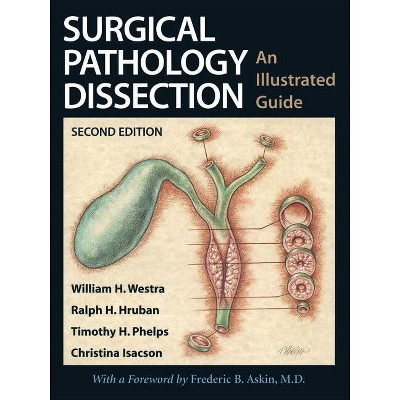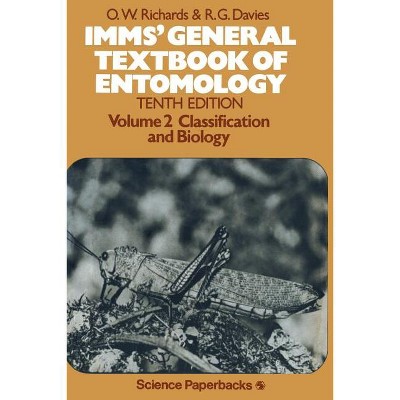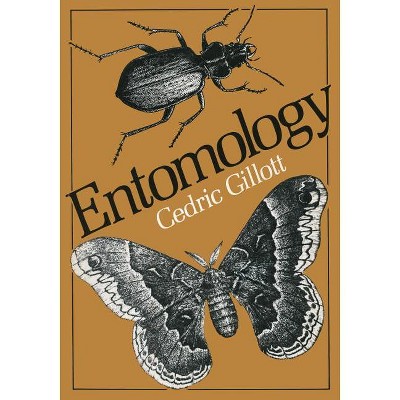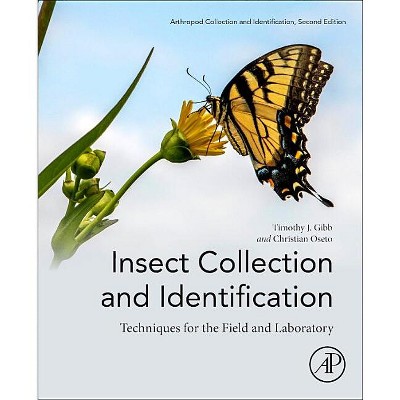Forest Entomology and Pathology - by Jeremy D Allison & Timothy D Paine & Bernard Slippers & Michael J Wingfield (Hardcover)

About this item
Highlights
- A comprehensive companion textbook for undergraduate and graduate courses in Forest Entomology has not been published since the text by Coulson and Witter in 1984.
- About the Author: Jeremy D. Allison is a Research Scientist with the Canadian Forest Service, Group Leader of the Satellite Lab in Applied Chemical Ecology, Forestry and Agricultural Biotechnology Institute, University of Pretoria and an adjunct assistant professor in the John H. Daniels Faculty of Architecture, Landscape and Design at the University of Toronto.
- 810 Pages
- Science, Life Sciences
Description
Book Synopsis
A comprehensive companion textbook for undergraduate and graduate courses in Forest Entomology has not been published since the text by Coulson and Witter in 1984.Comprehensive case studies to accompany chapters on specific feeding guilds and pest management.
This text will have a chapter addressing the invasion biology of forest insects. This text will have a companion volume co-edited by the same four editors (Volume 1: Allison, Paine, Slippers and Wingfield; Volume 2: Slippers, Wingfield, Paine and Allison).
From the Back Cover
This open access book will provide an introduction to forest entomology, the principles and techniques of forest insect pest management, the different forest insect guilds/feeding groups, and relevant forest insect pest management case studies. In addition to covering 30% of the earth, forest ecosystems provide numerous timber and non-timber products that affect our daily lives and recreational opportunities, habitat for diverse animal communities, watershed protection, play critical roles in the water cycle, and mitigate soil erosion and global warming. In addition to being the most abundant organisms in forest ecosystems, insects perform numerous functions in forests, many of which are beneficial and critical to forest health. Conversely, some insects damage and/or kill trees and reduce the capacity of forests to provide desired ecosystem services. The target audience of this book is upper-level undergraduate and graduate students and professionals interested in forest health andentomology.
About the Author
Jeremy D. Allison is a Research Scientist with the Canadian Forest Service, Group Leader of the Satellite Lab in Applied Chemical Ecology, Forestry and Agricultural Biotechnology Institute, University of Pretoria and an adjunct assistant professor in the John H. Daniels Faculty of Architecture, Landscape and Design at the University of Toronto. He studies the behavioural and chemical ecology of forest insects.Timothy Paine is Distinguished Professor and Entomologist, Emeritus, Tokuji and Bettie L. Furuta Endowed Chair, and UC Riverside Distinguished Teaching Professor in the Department of Entomology at the University of California Riverside. He studies integrated management of invasive insects in urban and recreational forest systems, biological control, insect symbioses, and behavior of parasitoids and their hosts.
Bernard Slippers is the Director of the Tree Protection Cooperative Programme and the Forestry and Agricultural Biotechnology Institute (FABI)at the University of Pretoria. He studies the molecular ecology, evolution and management of insects and micro-organisms that affect plant health.
Michael Wingfield is a Research Professor in the Forestry and Agricultural Biotechnology Institute (FABI) and Advisor to the Executive of the University of Pretoria and the Immediate Past President of the International Union of Forestry Research Organisations (IUFRO). His research is focused on the identification and global movement of insects and microbial pathogens impacting on the health of trees in natural woody ecosystems and planted forests.











